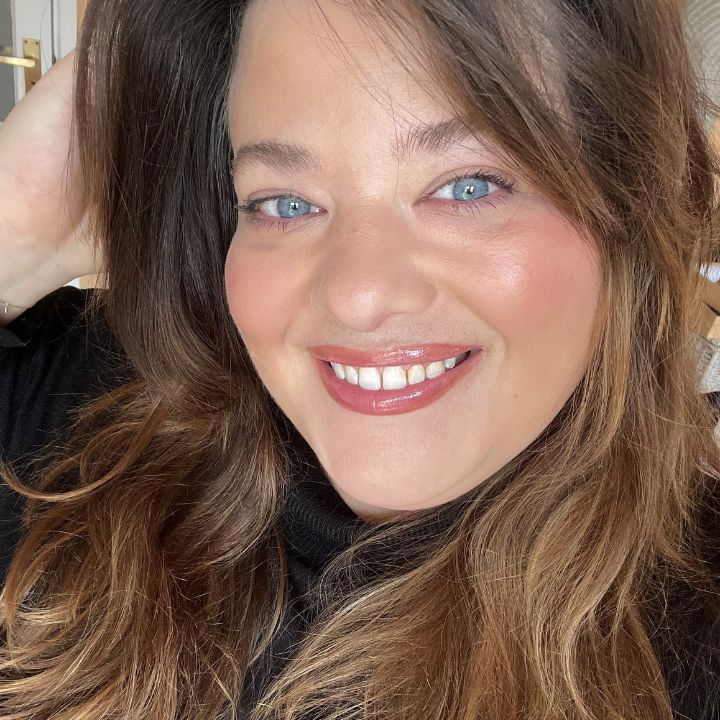There was a time when ‘influencer’ was a job title reserved for the select few, but thanks to the unprecedented reach of TikTok, anyone can now cause a sell-out of their favourite product. Take me for example, my last claim to fame was a fabric conditioner I shared.
The problem however is, this constant stream of must-buys can become overwhelming, not to mention expensive. Which is where the latest 'de-influencing' trend comes in. Instead of raving about the latest cleanser/foundation/mascara you should purchase, people are warning us about the ones you shouldn’t.
As a beauty editor, de-influencing is something I’ve been writing about for years, it’s just that it didn’t have a name then. Having the privilege of interviewing the best experts in their field, be it hair, makeup, or skincare, means I know exactly where to invest my money in my routine and more importantly, where not to.
Here’s what you need to know in order to make better informed purchases:
How to save on your makeup routine
Straight off the bat, I can tell you that there are certain products in your makeup bag that just aren’t worth paying more than £12 for, like mascara. One artist recently shared his current favourite that he uses on his Hollywood A list clients - Maybelline The Falsies Link opens in a new window.
Eyeshadow, liner and lipstick all fall into the same category, but where I would recommend spending a bit more is your base. Not only do you tend to find a better shade match, but more natural finishes that mean even a higher coverage base won’t look cakey.
While the high street has come a long way in terms of brush quality, cheap makeup sponges absorb more product (even when wet). The least I would spend on one is £7, anything less than that and you’ll end up throwing your foundation down the drain.
But you can make that money back by multi-purposing some of the products in your room. It sounds old fashioned, but I often use my lipstick as my cream blush as it gives a cool monochromatic look and for every day, my bronzer always doubles up as my eyeshadow.
How to save on your skincare routine
First of all, no one needs a ten-step skincare routine. My rule of thumb that I’ve learnt from the dermatologists I’ve interviewed is:
AM: Cleanse – Targeted product – SPF
PM: Cleanse – Targeted product – Moisturise
Save money on your cleanser, after all you wash it off. In the morning a micellar water is fine and definitely not a product you should be spending more than a high street price on. In the evenings double cleansing is important to first remove your makeup and then cleanse your skin, but you can use the same cleanser twice, you don’t need to buy two.
Your ‘targeted product’ is where you should invest and spend the most. This could be a vitamin C serum to help brighten skin or if you struggle with breakouts, it may be a niacinamide. This could also mean an exfoliating acid like a glycolic toner to refine skin texture and help improve the appearance of pores or a retinol if you’re focus is fine lines and wrinkles.
Like makeup brushes, the high street has come a long way in terms of SPF and moisturiser formulations, so you can recoup some money back here. Remember, UV damage is responsible for 90% of skin ageing. If you’re not wearing an SPF every day, there really is zero point in investing in products like retinol.
A few additional flash skincare savers: eye cream you can easily skip. I take my serums up around my eye area instead. Always pat a hydrating toner or essence onto skin with your hands instead of letting a cotton pad soak it all up. Don’t use a retinol and a chemical exfoliator (like your glycolic) on the same evening as they overlap jobs. Always alternate.
How to save on your haircare routine
I will never forget the hairdresser who told me that investing in a good haircut will save you money in the long term. Not only does it mean you have a ‘style’ already so need less product, but your hair won’t be as damaged. Meaning split end treatments and intensive, pricey bond-building products aren’t necessarily needed.
In terms of your colour, I always ask for either balayage or hidden highlights which means you can get away with colouring your hair just twice a year.
Just like your makeup bag, your haircare products can also be multi-purpose. Curly hair types need a leave-in conditioner but if you’re on a budget, a tip I learnt is to simply not rinse out your in-shower conditioner entirely. It makes sense, after all, why are you washing out one conditioner to replace it with another?
Similarly, your makeup bag can work in your haircare routine. If you have a clear brow gel it can double up as a baby hair/flyaway tamer and eyeshadow can be used as a root cover up. That’s a tip I learnt from stylists who use it to cheat a fuller hairline, especially if their clients have a slicked back updo.
Finally, styling products like hairspray can easily be bought for less than a fiver, but don’t underestimate the power of a good hairbrush. I would always spend more to get a good detangling one, along with a synthetic boar bristle that smooths.
With better formulas than ever, you can create an effective routine no matter your budget. To save the most, multi-task your products and keep a minimal skincare edit. After all, a ten-step skincare regime is a luxury, not a necessity by any means.
Saving up for a fancy new serum?
Create a savings pot in the Virgin Money mobile banking app for your beauty splurges.
Find out more
